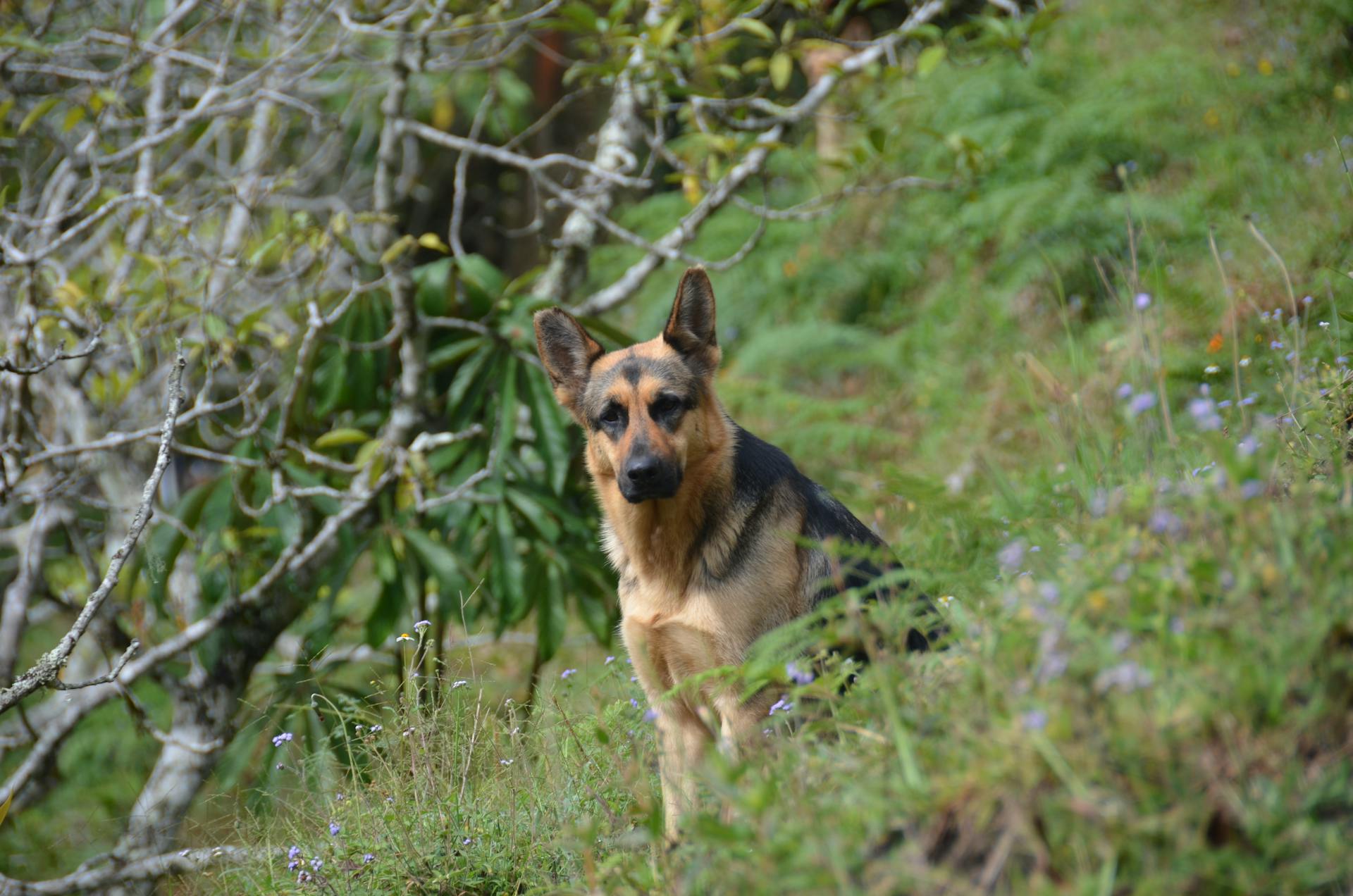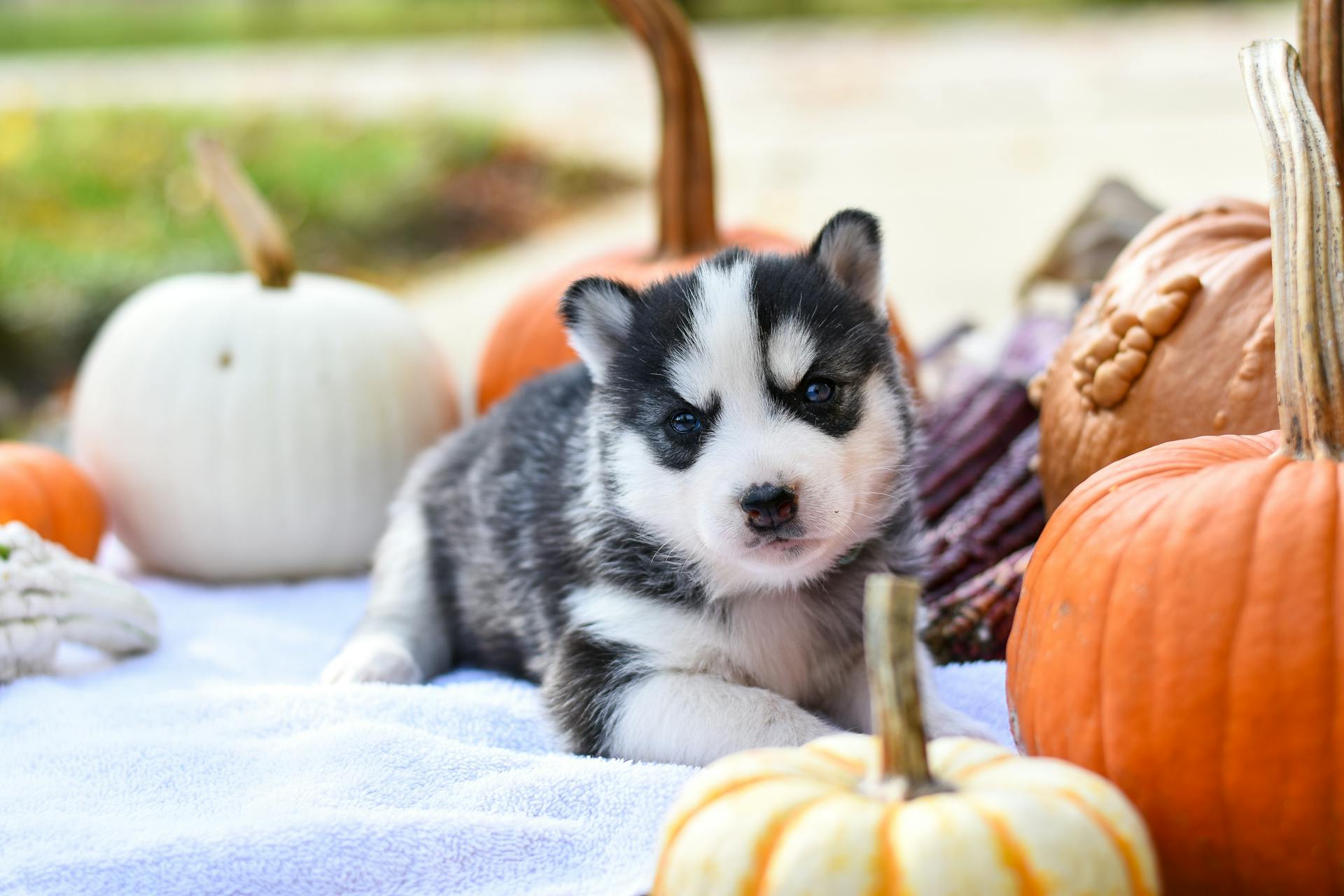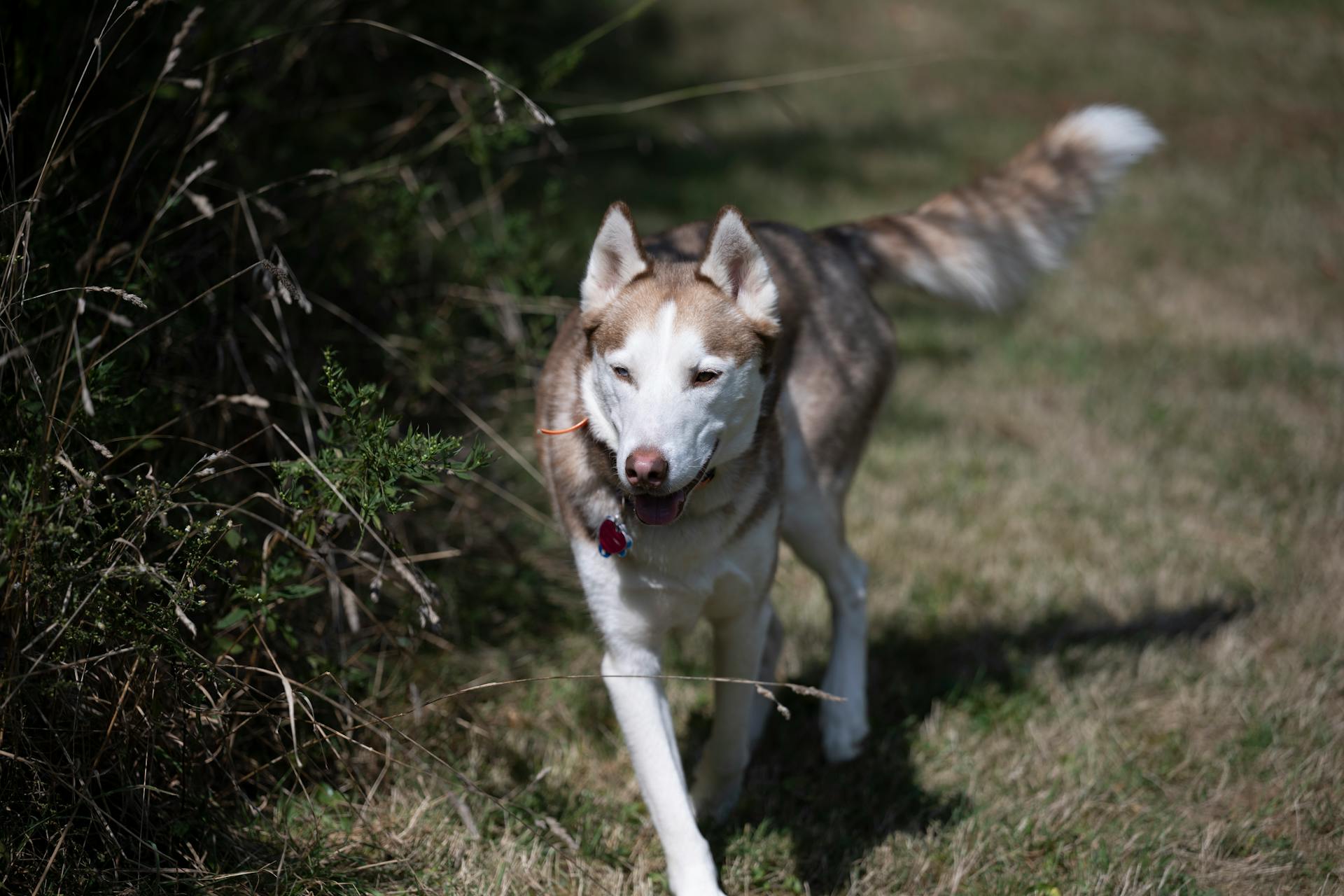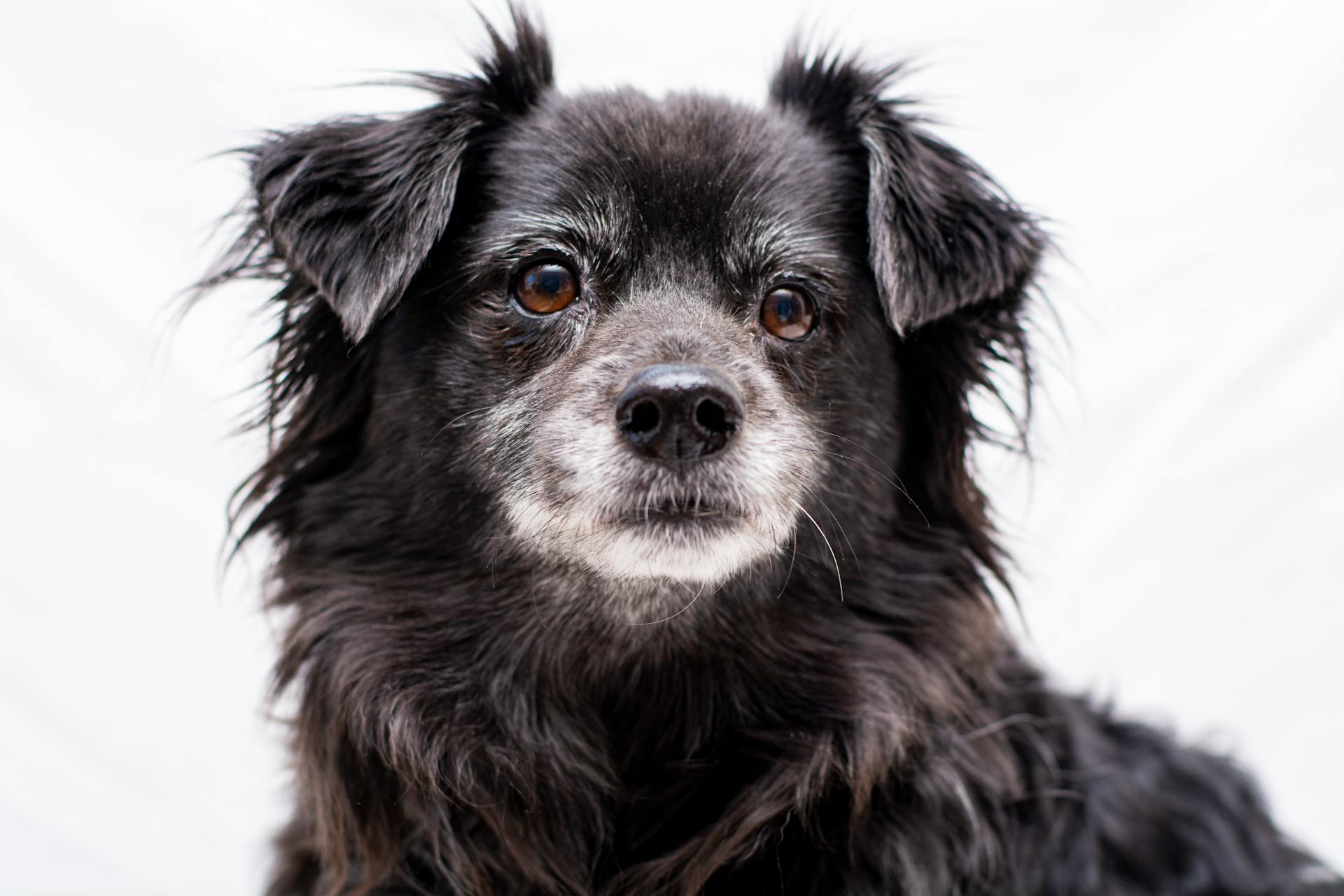
Dogs blowing their coat is a natural process that can be both fascinating and frustrating for owners. It's a sign that their coat is shedding its old layer to make way for a new one.
During this time, dogs can lose up to 40% of their coat in just a few weeks. This can be overwhelming for some owners, especially if they're not used to it.
Dogs typically blow their coat twice a year, once in the spring and again in the fall. This is because the changing seasons trigger the release of new growth.
Some breeds, like Siberian Huskies and Alaskan Malamutes, are more prone to heavy shedding due to their thick double coats.
Causes and Reasons
Dog blowing coat is a common phenomenon, but what causes it? It's part of the natural hair growth cycle, where dogs shed their old hair to make way for new, healthy hair.
German Shepherds, in particular, tend to blow their coats in anticipation of a change in season. This is because their bodies are naturally attuned to the environment, and the changing temperatures and daylight hours signal the need for a new coat.
Indoor heating can sometimes confuse their biological rhythms, tricking their bodies into thinking it's a warmer season, leading to shedding or "blowing" their coat. This can be especially true if your home is heated in the winter.
Stress, poor nutrition, and health issues can also contribute to a German Shepherd shedding in winter. If you notice your dog is shedding excessively or experiencing other concerning symptoms, it's a good idea to consult with your veterinarian to rule out any underlying health problems.
Dogs shed their old hair to make way for new, healthy hair, and it's a natural process that all dogs go through.
Duration and Management
Dog blowing coat can be a lengthy process, lasting anywhere from 2 weeks to over a month.
Most dogs will blow their coats for a little over a month, which can be a significant amount of time.
The duration of coat blowing also depends on factors such as health, age, genetics, and hormones.
As a dog owner, it's essential to be patient and prepared for the shedding process, which can be overwhelming at times.
How Often Do Dogs Shed?
Dogs typically shed their undercoat twice a year, with the heaviest blow in the spring and a lighter blow in the fall.
Some dogs may start shedding as early as January, while others wait for the increase in daylight in the spring.
Puppies won't shed their coat because they don't have their full adult coat yet.
Double-coated dogs shed more in the spring when their winter coat sheds to make way for the lighter summer coat.
The thick undercoat usually sheds twice a year, and the outer layer, or topcoat, once a year.
You can expect to have piles of fluff for about 2-4 weeks each season, depending on the breed.
Some dog breeds shed a lot more hair than others, especially those with a dense undercoat, like huskies.
Expand your knowledge: Blower for Dog Grooming
How Long Does It Last?
The duration of a dog's coat blowing can vary, but most dogs will blow their coats from anywhere from 2 weeks to a little over a month.
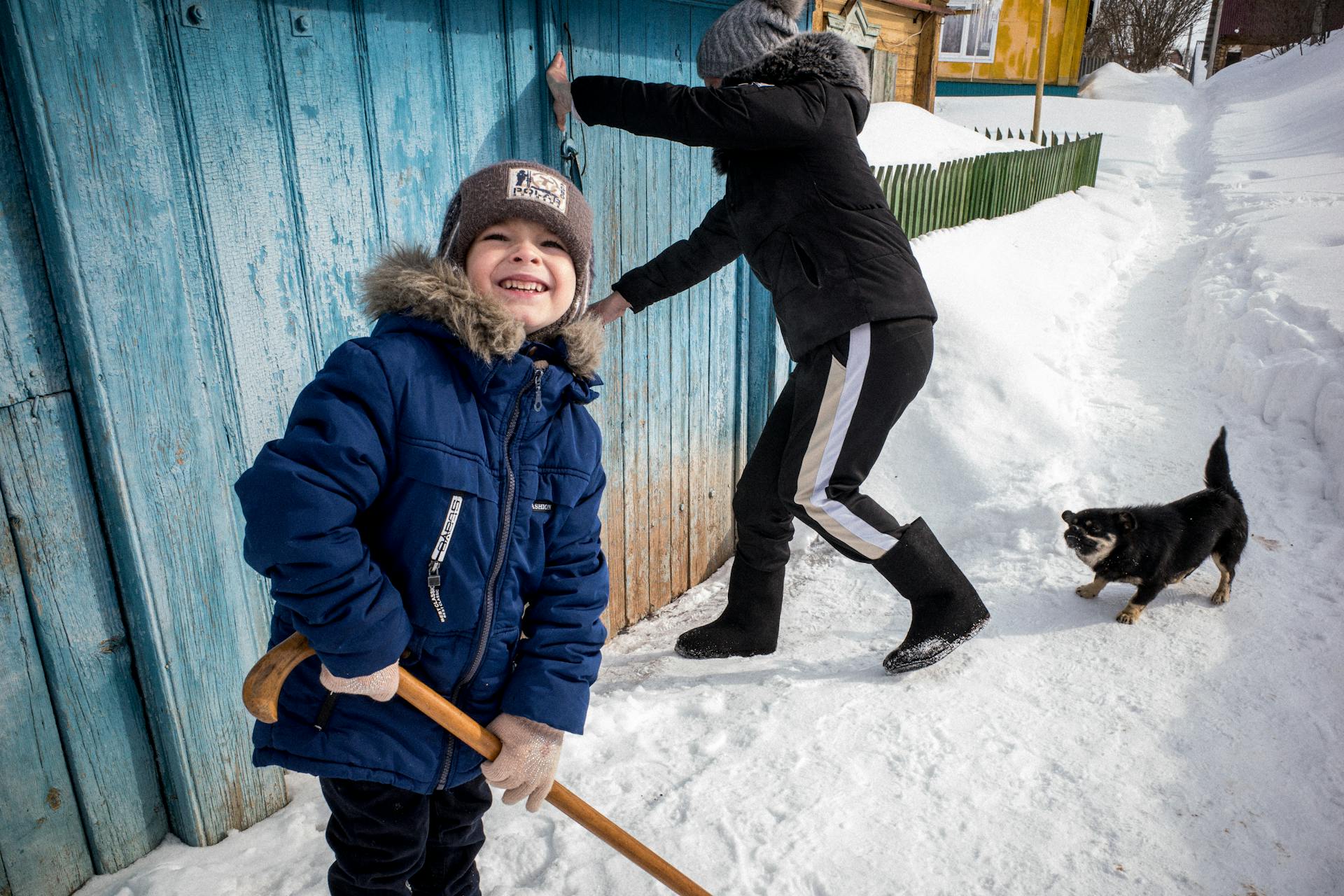
Factors such as health, age, genetics, and hormones can influence how long this process takes.
Dogs with thicker undercoats may take longer to blow their coats, while those with thinner undercoats may complete the process more quickly.
It's essential to monitor your dog's progress and adjust their grooming routine accordingly to ensure their comfort and health.
How to Manage Excessive Shedding
Managing excessive shedding can be a challenge, especially if you notice it's accompanied by skin irritation.
Dog owners often underestimate the importance of regular grooming during shedding season, but it's crucial to brush your dog regularly to reduce loose hair.
If your dog's coat appears patchy, it may be a sign that something's amiss, so keep an eye out for any unusual changes.
Regular veterinary check-ups can help identify underlying health issues that might be contributing to excessive shedding.
Conditions like allergies, thyroid imbalances, or skin infections could be the culprit, so don't hesitate to consult your vet if you're concerned.
Brushing your dog regularly can help distribute skin oils, keeping their coat healthy and shiny, which may also help reduce shedding.
By staying on top of grooming and monitoring your dog's coat, you can catch any potential health issues early on.
For more insights, see: Does Blowing in a Dog's Face Hurt Them?
Grooming and Care
Regular brushing is pivotal in managing a German Shepherd's blowing coat. It removes dead hair and distributes oils, contributing to a shiny, healthy coat. Brushing your dog daily, especially during the coat-blowing phase, helps collect the loose undercoat before it ends up on your furniture.
A balanced diet rich in Omega-3 and Omega-6 fatty acids can promote skin and coat health, reducing excess shedding. Regular vet check-ups ensure early detection of health issues that can impact your German Shepherd's coat condition, helping reduce excessive shedding and maintain a shiny coat.
To effectively manage your German Shepherd's shedding, consider the following tools: De-shedding rake: helps brush through thick hair and undercoats.Furminator de-shedding tool: removes loose undercoat, but use with caution.Comb: smooths out the coat, allowing it to lay flat.Slicker brush: ideal for gentle brushing and detangling.Pin bristle brush: perfect for smoothing out the coat after de-shedding.
For another approach, see: When Do German Shepherds Blow Their Coat
Regular Brushing
Regular brushing is a crucial part of your German Shepherd's grooming routine, especially during shedding season. Brushing helps remove loose fur before it ends up all over your home.
For double-coated dogs like German Shepherds, tools like an undercoat rake or deshedding brush are particularly useful. These tools can help you brush your dog daily during the heavy shedding periods to minimize the mess.
Aim to brush your dog daily, especially during the coat-blowing phase, to collect the loose undercoat before it ends up on your furniture. This simple act can drastically reduce the amount of fur around your house.
Brushing stimulates your dog's skin, promoting the production of natural oils. These oils are then evenly distributed across the length of the coat, providing a natural sheen and preserving the health of the outer fur.
Here are some of the best dog shedding tools available:
- De-shedding rake: features wide-set teeth to help brush through thick hair and undercoats.
- Furminator de-shedding tool: features a blade with teeth that removes loose undercoat.
- Comb: an excellent tool for finishing the de-shedding process, as it smooths out the coat, allowing it to lay flat.
- Slicker brush: this brush is ideal for gentle brushing and detangling, as it lifts out undercoat and smooths overall coat.
- Pin bristle brush: soft pins on the ends of the bristles make this the perfect brush once you have finished de-shedding and need to smooth out the coat.
Regular brushing not only helps manage shedding but also promotes a healthier coat. By brushing your German Shepherd regularly, you can help distribute oils and keep their coat looking its best.
Healthy Supplements
Supplements like fish oil can improve your German Shepherd's skin health and add a glossy sheen to their coat.
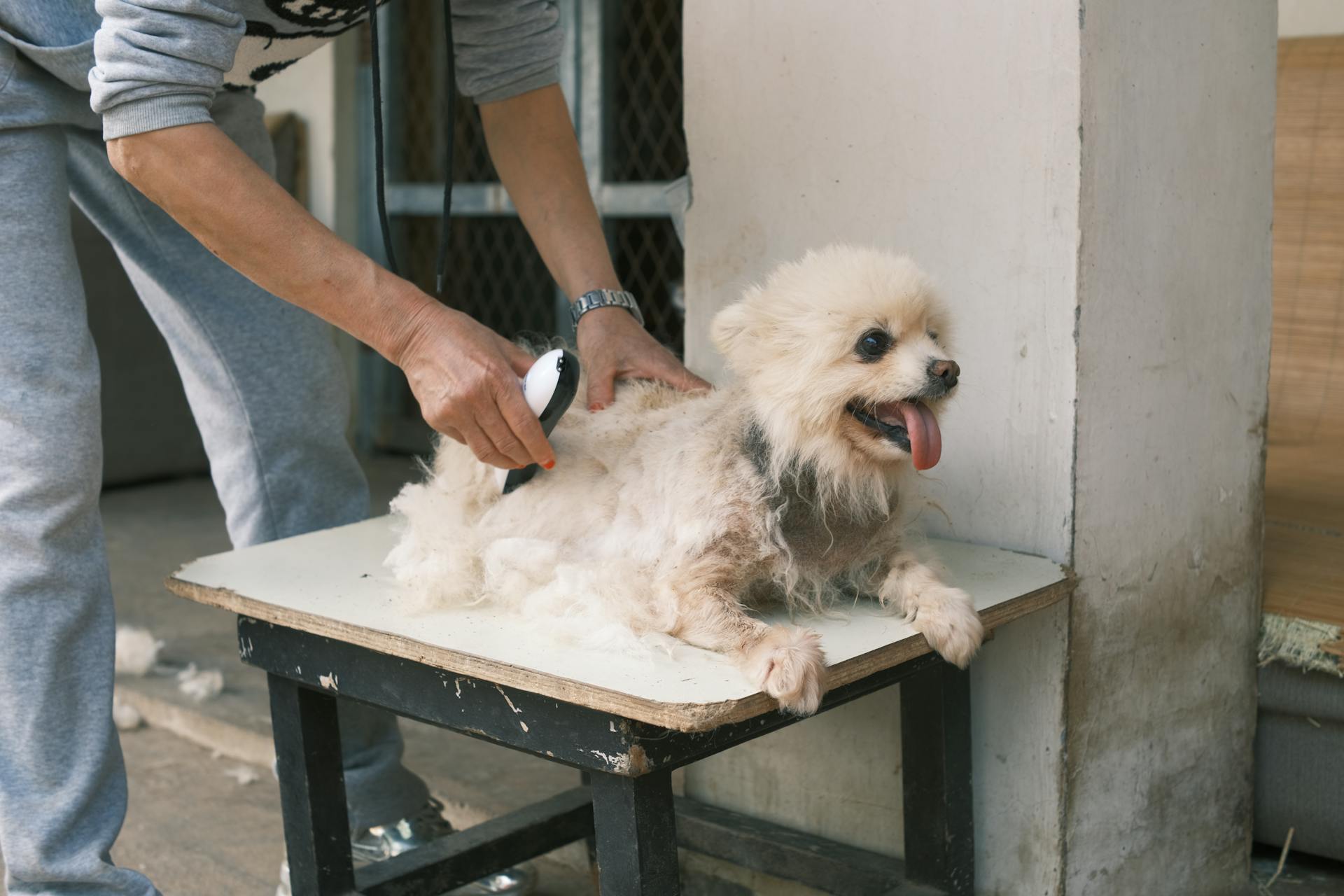
Omega-3 fatty acids in fish oil can help reduce inflammation, which is especially important during the coat-blowing phase.
Biotin, a B vitamin, can aid in the production of keratin, a hair protein that promotes a healthy coat and reduces shedding.
Consult with your vet before starting any new supplement regimen to ensure you're giving your German Shepherd the right type and dosage.
They can guide you on how to best support your Shepherd's coat health, especially during the coat-blowing phase.
Health and Hygiene
Bathing your German Shepherd too frequently can lead to a dull coat and increased shedding, especially during the coat-blowing phase. Limit bathing to once every 4-5 months or when noticeably dirty.
Using a gentle, dog-specific shampoo is crucial to avoid stripping natural oils from your dog's coat and skin. Always choose a shampoo specifically designed for dogs to ensure you're cleaning without causing harm.
Ensuring your German Shepherd always has access to fresh, clean water is essential for maintaining hydration, which in turn promotes healthy skin and a glossy coat.
Broaden your view: What Food Is Good for Dogs Skin and Coat
Limited Bathing
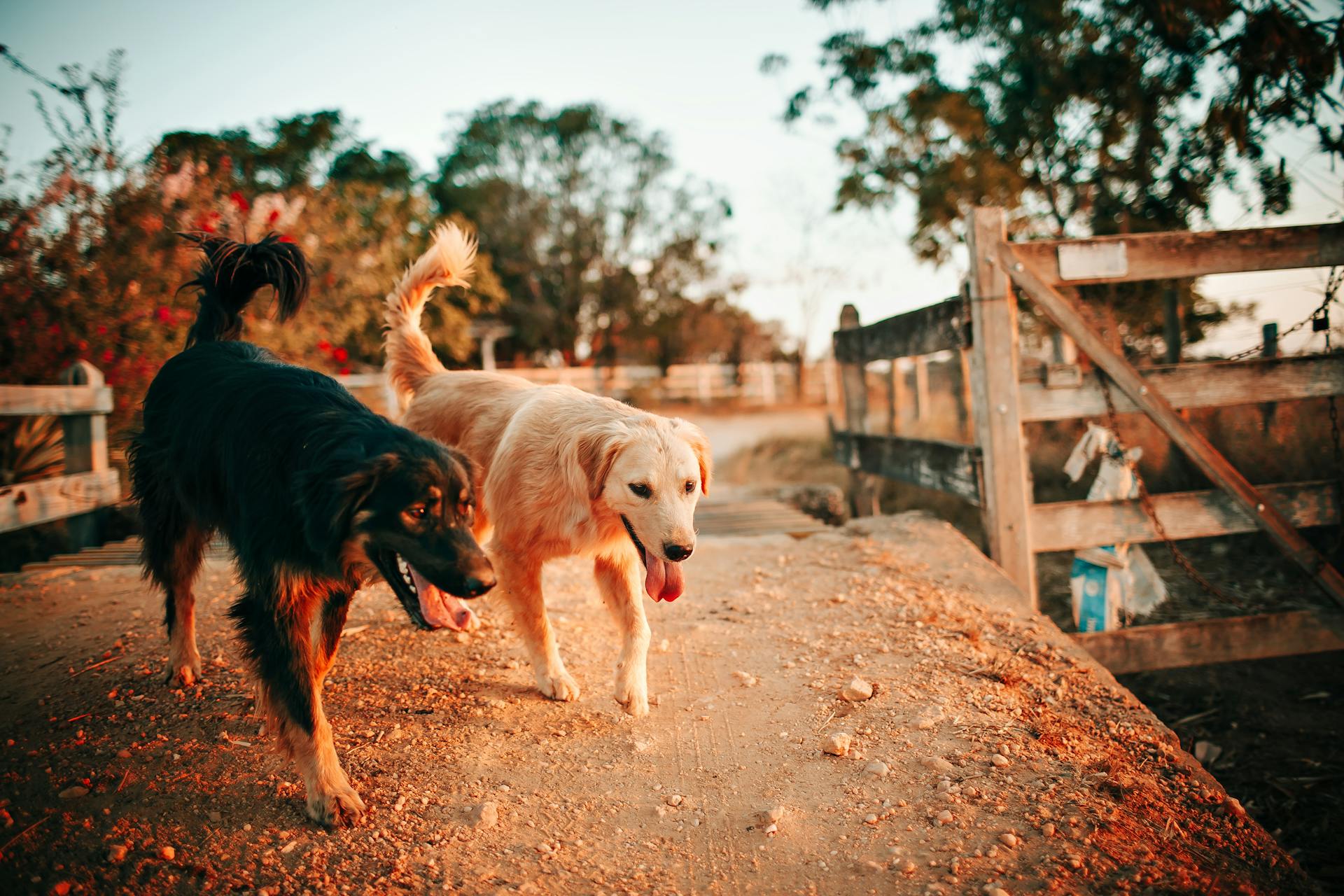
Bathing your German Shepherd should be a mindful process to avoid stripping natural oils from their coat. Overbathing can lead to a dull coat and increased shedding during the coat-blowing phase.
Bathing is essential for maintaining your German Shepherd's coat health, but it's crucial not to overdo it. Overbathing can dry out your dog's skin and strip away the natural oils.
Bathe your German Shepherd once every 4-5 months or when noticeably dirty. This frequency helps maintain a healthy coat and skin.
Using a gentle, dog-specific shampoo is essential to clean your German Shepherd without causing harm to their coat and skin.
On a similar theme: German Shephard Tail
Stay Hydrated
Hydration is essential for your German Shepherd's overall health, impacting skin condition, reducing shedding, and maintaining a lustrous coat.
Dehydration can lead to dry, flaky skin and a dull, brittle coat, which may increase shedding.
Ensuring your German Shepherd always has access to fresh, clean water helps maintain hydration and promotes healthy skin and a glossy coat.
Water plays a critical role in every cell's function in your German Shepherd's body, including those in the skin and hair.
Hydration from the inside out can significantly assist in managing the intensity of your dog's coat-blowing season and enhance the natural beauty of its coat throughout the year.
Regular Vet Check-ups
Regular vet check-ups are a must for your German Shepherd's overall health and coat condition. Regular veterinary examinations can identify potential issues early, reducing their impact on your dog's coat.
Excessive shedding can be caused by hormonal imbalances, allergies, or skin infections. Your vet can provide personalized advice on grooming and diet based on your Shepherd's needs.
Regular check-ups can help reduce excessive shedding and maintain a shiny coat. Your vet can also provide guidance on how to manage your dog's coat during shedding season.
By catching potential issues early, you can prevent them from affecting your dog's coat quality. This will keep your German Shepherd's coat vibrant, healthy, and well-managed throughout the year.
Take a look at this: Vets Dog Treats
German Shepherd Specifics
German Shepherds typically experience this significant shedding phase twice a year, aligning with the change of seasons. Their dense undercoat is dramatically shed to adjust for warmer or cooler climates.
This intense shedding process can result in a lot of hair around your home, but it's completely normal. You'll often notice clumps of hair falling out as they shed their undercoat.
If you notice your dog losing hair in clumps outside of shedding seasons, it may be due to health issues like allergies, skin infections, or parasitic infestations.
Which Breeds Experience It?
German Shepherds are known to experience a significant amount of shedding, particularly during their shedding season or "blowing their coat." This is a natural process where they shed their undercoat in preparation for the changing seasons.
Clumps of hair falling out is a normal part of this process, but if your German Shepherd is losing hair in clumps outside of these periods, it may be due to health issues like allergies, skin infections, or parasitic infestations.
Some dog breeds shed a lot more hair than others, and German Shepherds are definitely among them. They have a double coat with a dense undercoat, which sheds heavily during seasonal changes.
Double-coated dog breeds, like German Shepherds, tend to blow coat each year. This is especially true for breeds like the Siberian Husky, which sheds twice a year to regulate temperature. German Shepherds also fit into this category, shedding heavily during their shedding season.
Here are some double-coated dog breeds that blow coat at least once a year:
- Akita
- Alaskan Malamute
- Australian shepherd
- Cardigan Welsh Corgi
- Chow Chow
- German shepherd
- Golden retriever
- Great Pyrenees
- Labrador retriever
- Newfoundland
- Pembroke Welsh Corgi
- Saint Bernard
- Shiba Inu
German Shepherd Season
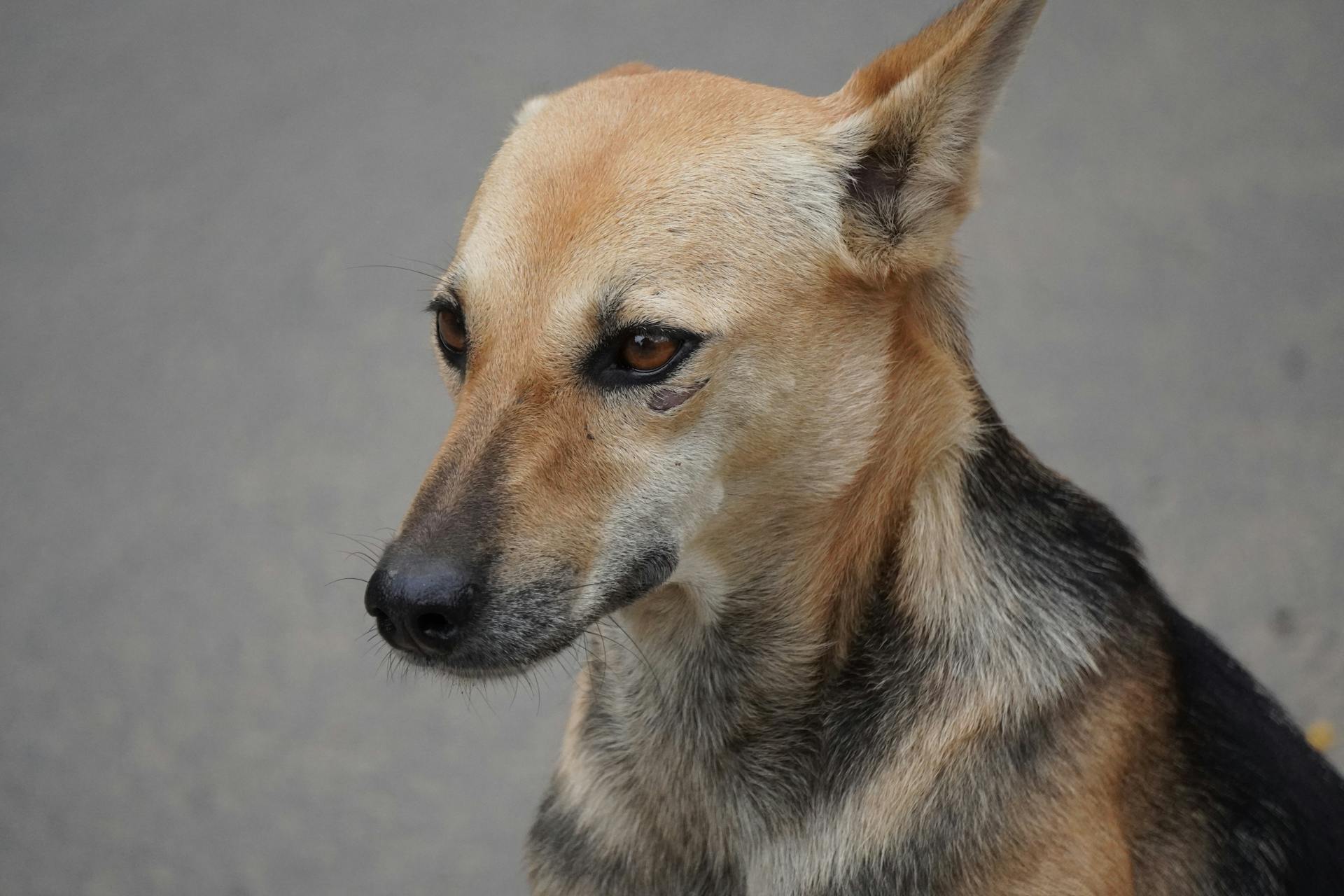
German Shepherds typically have two shedding seasons per year, in spring and fall, each lasting about three weeks. This is often referred to as 'blowing coat'.
During these periods, you may notice a significant increase in the amount of hair your German Shepherd sheds. Regular grooming during these times is key to managing your Shepherd's coat and maintaining a fur-free home.
German Shepherds 'blow' or shed their undercoats during the shedding seasons to prepare for the changing weather. They shed their thick winter undercoat in the spring to allow for a lighter summer coat, and vice versa.
You'll often notice clumps of hair falling out when your German Shepherd is in their shedding season or "blowing their coat." This happens as they shed their undercoat in preparation for the changing seasons.
A German Shepherd's winter coat is thicker and denser to protect against the cold, while their summer coat is lighter and less dense to keep them cool.
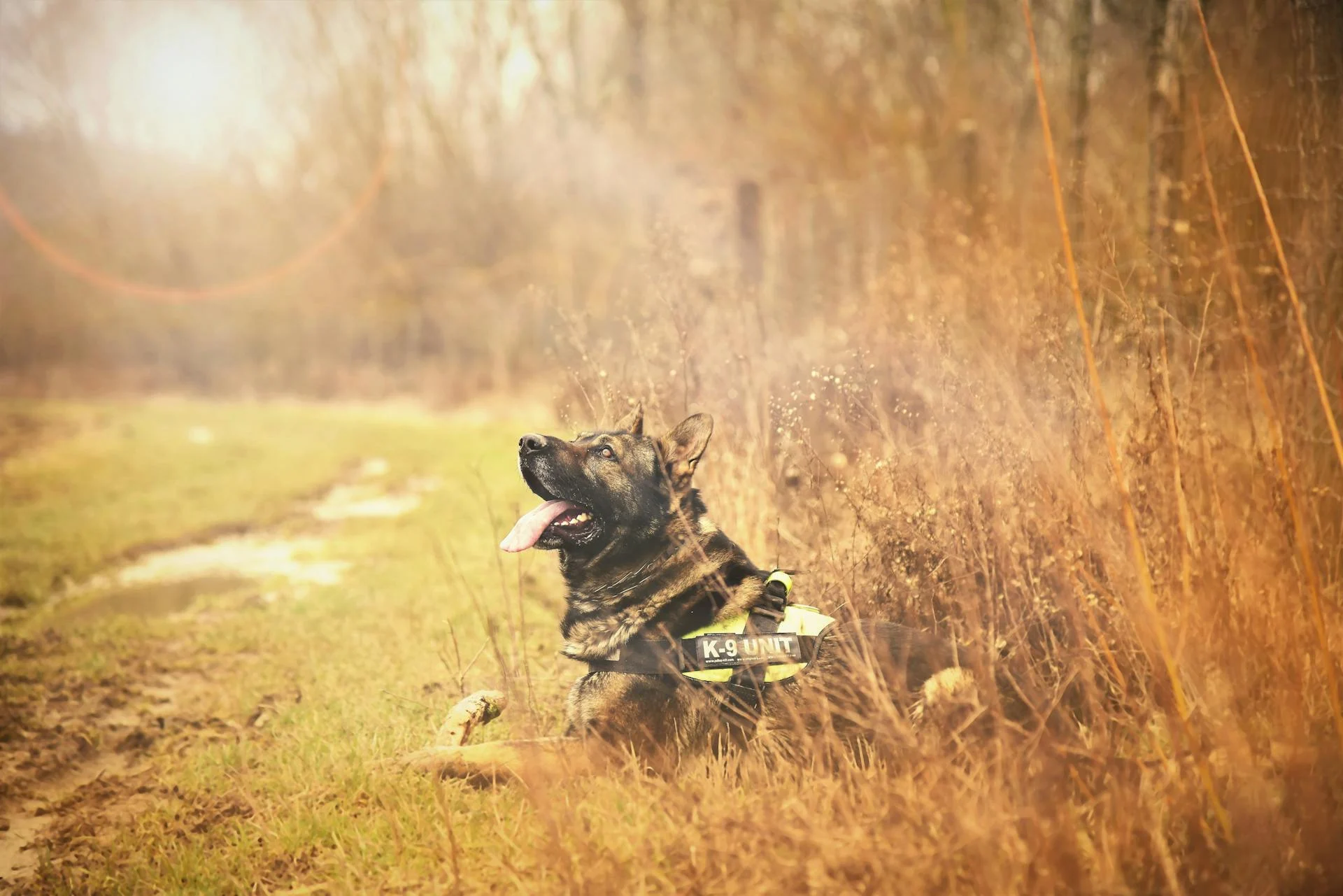
Here are some tips to help you navigate shedding season:
- Brush your German Shepherd daily to remove loose fur and maintain a healthy coat.
- Use a de-shedding tool or undercoat rake daily to capture the loose fur.
- Provide a balanced diet rich in Omega-3 and Omega-6 fatty acids to promote skin and coat health.
- Consider a professional grooming session during this time.
Remember, shedding is a natural part of your German Shepherd's life, and with patience and care, you can easily navigate this period.
Frequently Asked Questions
What is a blowout for a dog?
A "blowout" is a normal shedding process where dogs with thick coats release a large amount of fur at once, often in the spring. This is a natural response to changing temperatures and conditions.
Sources
- https://mybrownnewfies.com/2019/03/10/what-does-blow-coat-mean/
- https://gsdcolony.com/blogs/news/german-shepherd-blowing-coat
- https://www.petstock.com.au/blog/articles/dog-shedding-guide-and-tips
- https://www.fourpaws.com/pets-101/grooming-gateway/dog-shedding
- https://www.dailypaws.com/dogs-puppies/dog-grooming/how-to-manage-dog-blowing-coat
Featured Images: pexels.com
